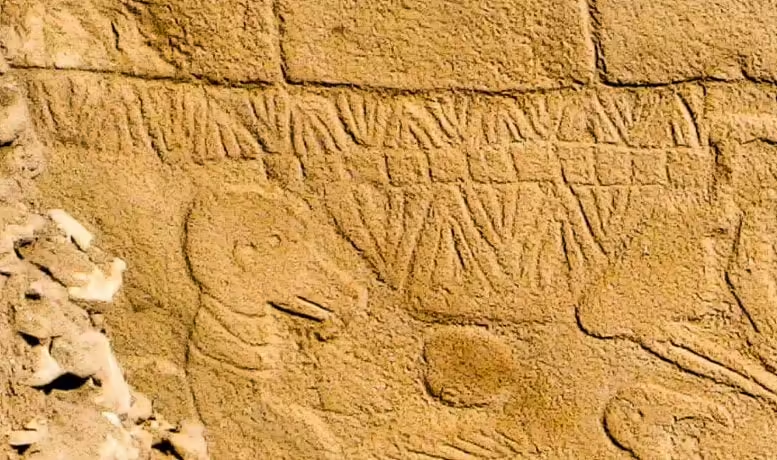Research at the 12,000-year-old Göbekli Tepe archaeological site in Turkey suggests carvings on ancient columns may represent the world’s oldest solar calendar and potentially commemorate a devastating comet strike that could have led to the development of civilisation.
Experts suggest that markings on a 12,000-year-old stone pillar found at an archaeological site in Turkey could be the world’s oldest solar calendar, created to commemorate a devastating comet impact. Researchers believe the markings, found at Göbekli Tepe in southern Turkey — an ancient complex of temple-like structures decorated with intricate carvings — could document an astronomical event that caused major changes in human civilisation.
The study suggests that ancient people may have recorded their observations of the sun, moon, and constellations in the form of a solar calendar designed to track time and mark the changing seasons. A new analysis of V-shaped symbols carved into pillars at the site revealed that each V could represent a single day. This interpretation allowed the researchers to calculate a 365-day solar calendar for one of the pillars, consisting of 12 lunar months plus 11 additional days.
The meaning of solar and lunisolar calendars
The summer solstice is a special day, represented by the letter V on the neck of a bird-like beast believed to represent the constellation of the summer solstice. Other statues with similar V-shaped neck markings, possibly representing gods, have been found nearby.
Because both lunar and solar cycles are depicted, the carving may represent the world’s oldest so-called lunisolar calendar, based on the phases of the moon and the position of the sun, predating other known calendars of this type by thousands of years.
According to researchers, ancient people may have made these carvings at Göbekli Tepe to record the date when a swarm of comet debris fell to Earth around 13,000 years ago, i.e. 10,850 BC.
The comet strike is thought to have triggered a mini ice age that lasted more than 1,200 years and wiped out many large animal species. It may also have caused changes in lifestyle and agriculture that are believed to have been associated with the rise of civilisation in the Fertile Crescent of Western Asia shortly thereafter.
Images of astronomical events
Another column at the site appears to depict the Taurid meteor shower, believed to be the source of the 27-day-long comet debris that emanated from the directions of Aquarius and Pisces.
The findings also confirm that ancient humans were able to record dates using precession (the wobbling of the Earth’s axis, which affects the movement of constellations across the sky) at least 10,000 years before this phenomenon was documented by ancient Greek Hipparchus in 150 BC.
The carvings apparently remained important to the people of Göbekli Tepe for thousands of years, suggesting that the impact event may have led to the emergence of a new cult or religion that influenced the development of the civilisation.
The findings also support the theory that Earth experiences more comet impacts when it crosses the path of orbiting comet fragments, which we normally think of as meteor showers.
Dr Martin Sweetman, from the University of Edinburgh’s School of Engineering, who led the research, said: “It appears that people on Earth face even more danger when their orbits intersect with cometary debris. ‘It seems that the people of Göbekli Tepe were keeping a close eye on the skies. Given that their world had been devastated by a comet strike, it was to be expected. This event may have given a boost to civilisation, started a new religion and motivated the development of agriculture to adapt to the cold climate. Perhaps their efforts to record what they saw were the first steps towards the development of writing millennia later.’













